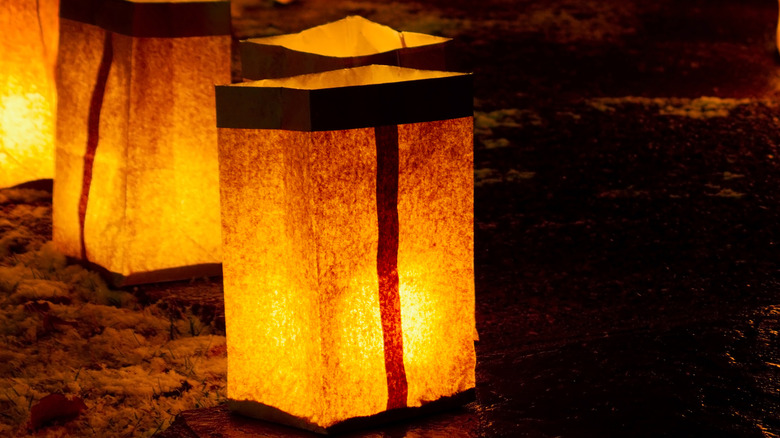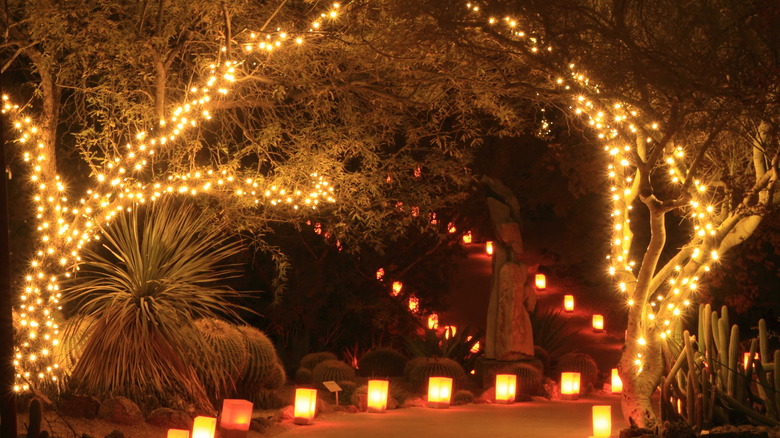The Real Reason You See Luminarias On Christmas Eve
This time of year, the beauty of flickering light might come from Christmas candles, strings of colored bulbs, or a luminaria, a type of lantern that typically secures an illuminated votive in a paper bag or sack with sand. The celebration of such holiday brilliance began simply with candles placed on a tree. It's said that German theologian and father of the Protestant Reformation Martin Luther arranged the first candle amid his evergreen in the 15th century, according to History Extra. The taper, lit on Christmas morning, represented Jesus Christ as a "light of the world," as described in the Gospel of St. Matthew. Not everyone could afford this luxury, since candles remained expensive until the 19th century. By then, many families hung a dozen or more on their trees.
Electric lights appeared in 1882 as a marketing ploy by the Edison Electric Light Company in New York. Edward Jones, a friend of Thomas Edison, decorated a tree with blue, red and white lights, according to Christmas Light Source. Again, cost kept these from going mainstream until the early 1900s. Initial sets were about $12 for 24 lights (about $80 today) and many rented them, illuminating their homes with the seven available colors (clear, frosted, green, blue, purple, ruby and opal, in case you wondered).
Luminarias became a holiday tradition sometime in the 16th century, and the appeal of these celebratory lights that bedeck pathways and homes has only grown since they first appeared (via Home Tips for Women).
Lighting the way during the holiday
The lights had a practical use, and provided illumination so people could attend Midnight Mass on the last evening of Las Posadas, a nine-day holiday that first began in Spain. Now, mostly Mexico and the U.S. southwest celebrate it. Why nine? That number represented the Virgin Mary's pregnancy, and the festival honored her journey to Bethlehem. The special Mass acknowledged the search she and Joseph underwent as they sought shelter in Bethlehem (from Home Tips for Women).
One legend associated with these lights is that they could help guide Christ's spirit into people's homes during the holiday, said Luma Base. In New Mexico, luminarias are known as "farolitos," which means "little lantern" in Spanish. Luminary, or luminaria, translates to "festival light." In places like Santa Fe and Albuquerque, New Mexico, these pretty lanterns are included in even the most elaborately decorated homes. Of course, nowadays the decorated paper bags are used for more than Christmas and can be seen at other celebrations, such as Halloween, weddings and more (from FLIC Luminaries).

